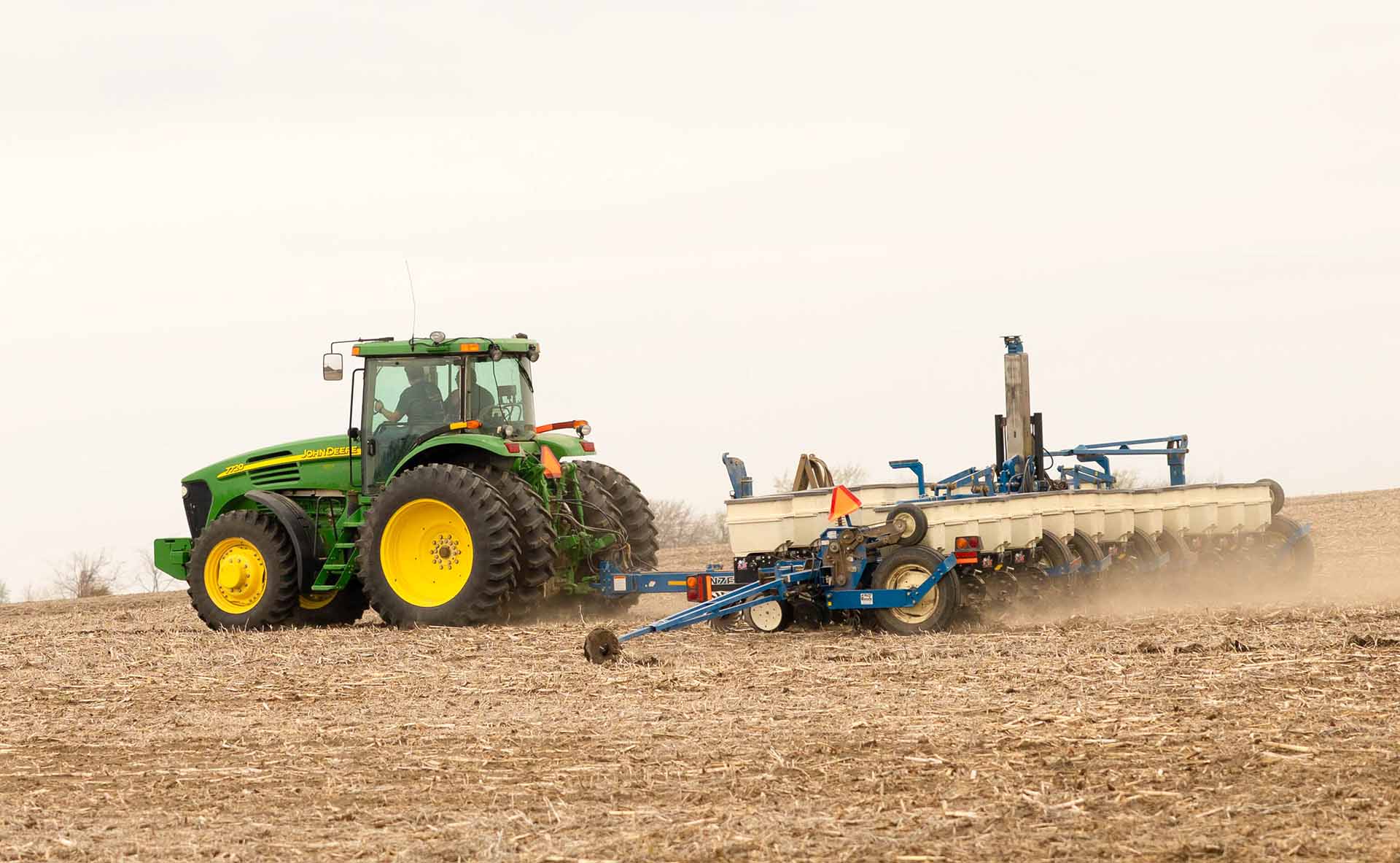
(Photo: Iowa Soybean Association / Joclyn Bushman)
Calculating true cost of a trade war for soybean farmers is tricky
May 1, 2025 | Aaron Putze, APR
U.S. farmers are often the first to feel the pain of a trade war. That’s because commodities like soybeans, pork, corn and beef are among the first to be tariffed or shunned outright by importers.
While many understand the concept, calculating the true cost of a trade war on soybean farmers – and even more specifically Iowa growers – is complicated.
Over the past year, soybean prices have declined more than $2 per bushel – from $12.50 in May 2024 to $10.34 per bushel at the open of today’s market. Since Jan. 1, 2025, soybean prices on the Chicago Board of Trade have wobbled between $9.90 and $10.75 per bushel. When accounting for basis, soybean prices remain $1.50-$2 per bushel below the cost of production as U.S. farmers plant the 2025 crop.
One variable to determining the impact of a trade war on soybeans is timing. Do tariffs ramp up at peak export time for U.S. farmers or when buyers are already sourcing from other destinations?
Another factor is weather and crop conditions in Brazil and Argentina. Brazil is the world’s largest exporter of whole soybeans while Argentina competes with the U.S. for global soybean meal market share.
Over the past few years, droughts have plagued Argentinian farmers, negatively impacting soybean production and thus, soybean meal exports.
But unlike 2018 when President Donald Trump and Chinese President Xi Jinping first engaged in tit-for-tat tariffs, Brazil and Argentina are coming off nearly ideal growing seasons. Brazil is forecast to produce nearly 170 million metric tons (MMT) – or 6.3 billion bushels – of soybeans in 2024/25, a record, while Argentinian production is estimated at nearly 50 MMT (3.7 billion bushels).
U.S. soybean farmers produced 4.3 billion bushels of soybeans in 2024, with Iowa farmers accounting for almost 14% or 597 million bushels. With planting conditions in the Midwest off to a solid start and with adequate moisture in place to get the crop started, U.S. farmers are optimistic about good yields, albeit on fewer acres planted to soybeans compared to previous years.
With large domestic and global soybean supplies, another way to measure the potential impact of an extended trade war is the reluctance of farmers to sell existing inventories. When prices remain suppressed, inventories build as farmers hold out hope for an easing of tariffs or a ding on production should weather conditions be less than ideal in major soybean production regions.
So, what percentage of the 2024 U.S. soybean crop do farmers still have to sell as they plant the 2025 crop?
The question was posed last week by Grant Kimberley, Iowa Soybean Association’s sr. director of market development.
The 5-year average for soybean marketing in Iowa would tell you that roughly 35% Iowa’s previous soybean crop remains unsold between March and August. Last year, 44% of the 2023 crop was unsold between March and August, according to Chad Hart, Iowa State University professor of ag economics.
But the latest grain stocks report from the USDA’s National Agricultural Statistics Service (NASS) shows there could be as much as 60% of the 2024 Iowa soybean crop left to sell.
“This is more than I would have expected, likely a consequence of the uncertainty caused by the current trade war,” said Kimberley. “While the bottom hasn’t entirely fallen out of soybean prices, it’s not hard to assume they would be considerably higher if not for the current market uncertainties caused by the tariffs.”
Kimberley, who farms near Maxwell, hopes some trade deals will be completed in advance of early fall when U.S. soybean export sales ramp up. However, he also recognizes China remains the biggest buyer of soy in the world and thus, a primary driver of domestic soybean prices.
U.S. farmers aren’t overly optimistic in quick resolutions to the trade war, evident by a steep decline in acres being planted to soybeans this growing season.
In March, the U.S. Department of Agriculture estimated 83.5 million acres would be planted to soybeans, down 4% from last year. Acreage decreases from last year of 300,000 or more are expected in Iowa along with other major soybean-producing states including Illinois, Minnesota, Nebraska, North Dakota, and South Dakota.
The announcement of new trade agreements would be the most impactful way to blunt the continued decline in soybean prices. The administration announced meaningful discussions are underway with India, South Korea and Japan. In a townhall held Wednesday evening touting the administration’s first 100 days, President Trump said more than 100 countries are calling to make deals.
For soybean farmers, the billion-bushels question remains: “Is China, which buys 60 percent of the world's exportable soybeans, one of them?”
Back